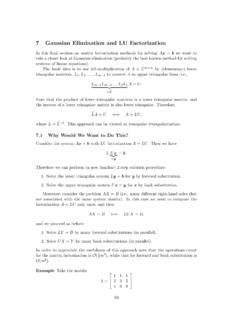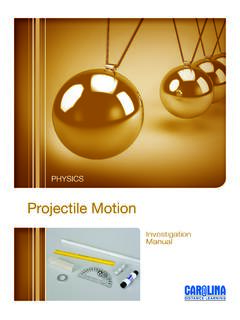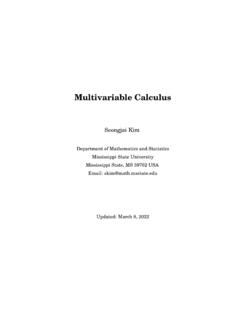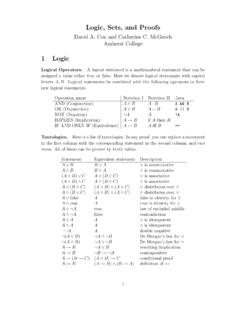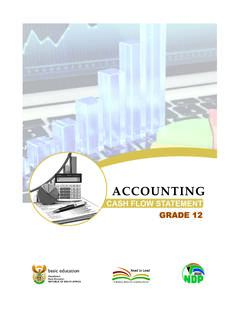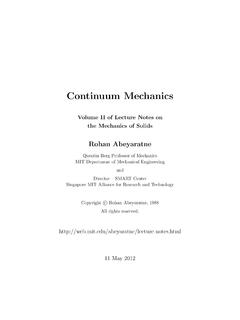Transcription of Model-Agnostic Meta-Learning for Fast Adaptation of Deep ...
1 Model-Agnostic Meta-Learning for Fast Adaptation of Deep NetworksChelsea Finn1 Pieter Abbeel1 2 Sergey Levine1 AbstractWe propose an algorithm for Meta-Learning thatis Model-Agnostic , in the sense that it is com-patible with any model trained with gradient de-scent and applicable to a variety of differentlearning problems, including classification, re-gression, and reinforcement learning. The goalof Meta-Learning is to train a model on a vari-ety of learning tasks, such that it can solve newlearning tasks using only a small number of train-ing samples. In our approach, the parameters ofthe model are explicitly trained such that a smallnumber of gradient steps with a small amountof training data from a new task will producegood generalization performance on that task.
2 Ineffect, our method trains the model to be easyto fine-tune. We demonstrate that this approachleads to state-of-the-art performance on two few-shot image classification benchmarks, producesgood results on few-shot regression, and acceler-ates fine-tuning for policy gradient reinforcementlearning with neural network IntroductionLearning quickly is a hallmark of human intelligence,whether it involves recognizing objects from a few exam-ples or quickly learning new skills after just minutes ofexperience. Our artificial agents should be able to do thesame, learning and adapting quickly from only a few exam-ples, and continuing to adapt as more data becomes avail-able.
3 This kind of fast and flexible learning is challenging,since the agent must integrate its prior experience with asmall amount of new information, while avoiding overfit-ting to the new data. Furthermore, the form of prior ex-perience and new data will depend on the task. As such,for the greatest applicability, the mechanism for learning tolearn (or Meta-Learning ) should be general to the task and1 University of California, Berkeley2 OpenAI. Correspondenceto: Chelsea of the34thInternational Conference on MachineLearning, Sydney, Australia, PMLR 70, 2017. Copyright 2017by the author(s).the form of computation required to complete the this work, we propose a Meta-Learning algorithm thatis general and Model-Agnostic , in the sense that it can bedirectly applied to any learning problem and model thatis trained with a gradient descent procedure.
4 Our focusis on deep neural network models, but we illustrate howour approach can easily handle different architectures anddifferent problem settings, including classification, regres-sion, and policy gradient reinforcement learning, with min-imal modification. In Meta-Learning , the goal of the trainedmodel is to quickly learn a new task from a small amountof new data, and the model is trained by the meta-learnerto be able to learn on a large number of different key idea underlying our method is to train the model sinitial parameters such that the model has maximal perfor-mance on a new task after the parameters have been up-dated through one or more gradient steps computed witha small amount of data from that new task.
5 Unlike priormeta-learning methods that learn an update function orlearning rule (Schmidhuber, 1987; Bengio et al., 1992;Andrychowicz et al., 2016; Ravi & Larochelle, 2017), ouralgorithm does not expand the number of learned param-eters nor place constraints on the model architecture ( requiring a recurrent model (Santoro et al., 2016) or aSiamese network (Koch, 2015)), and it can be readily com-bined with fully connected, convolutional, or recurrent neu-ral networks. It can also be used with a variety of loss func-tions, including differentiable supervised losses and non-differentiable reinforcement learning process of training a model s parameters such that afew gradient steps, or even a single gradient step, can pro-duce good results on a new task can be viewed from a fea-ture learning standpoint as building an internal representa-tion that is broadly suitable for many tasks.
6 If the internalrepresentation is suitable to many tasks, simply fine-tuningthe parameters slightly ( by primarily modifying the toplayer weights in a feedforward model) can produce goodresults. In effect, our procedure optimizes for models thatare easy and fast to fine-tune, allowing the Adaptation tohappen in the right space for fast learning. From a dynami-cal systems standpoint, our learning process can be viewedas maximizing the sensitivity of the loss functions of newtasks with respect to the parameters: when the sensitivityis high, small local changes to the parameters can lead [ ] 18 Jul 2017 Model-Agnostic Meta-Learning for Fast Adaptation of Deep Networkslarge improvements in the task primary contribution of this work is a simple model-and task-agnostic algorithm for Meta-Learning that trainsa model s parameters such that a small number of gradi-ent updates will lead to fast learning on a new task.
7 Wedemonstrate the algorithm on different model types, includ-ing fully connected and convolutional networks, and in sev-eral distinct domains, including few-shot regression, imageclassification, and reinforcement learning. Our evaluationshows that our Meta-Learning algorithm compares favor-ably to state-of-the-art one-shot learning methods designedspecifically for supervised classification, while using fewerparameters, but that it can also be readily applied to regres-sion and can accelerate reinforcement learning in the pres-ence of task variability, substantially outperforming directpretraining as Model-Agnostic Meta-LearningWe aim to train models that can achieve rapid Adaptation , aproblem setting that is often formalized as few-shot learn-ing.
8 In this section, we will define the problem setup andpresent the general form of our Meta-Learning Problem Set-UpThe goal of few-shot Meta-Learning is to train a model thatcan quickly adapt to a new task using only a few datapointsand training iterations. To accomplish this, the model orlearner is trained during a Meta-Learning phase on a setof tasks, such that the trained model can quickly adapt tonew tasks using only a small number of examples or effect, the Meta-Learning problem treats entire tasks astraining examples. In this section, we formalize this Meta-Learning problem setting in a general manner, includingbrief examples of different learning domains.
9 We will dis-cuss two different learning domains in detail in Section consider a model, denotedf, that maps observa-tionsxto outputsa. During Meta-Learning , the modelis trained to be able to adapt to a large or infinite num-ber of tasks. Since we would like to apply our frame-work to a variety of learning problems, from classifica-tion to reinforcement learning, we introduce a genericnotion of a learning task , each taskT={L(x1,a1,..,xH,aH),q(x1),q(xt+1|xt ,at),H}consists of a loss functionL, a distribution over initial ob-servationsq(x1), a transition distributionq(xt+1|xt,at),and an episode lengthH.
10 In supervised learning prob-lems, the lengthH= 1. The model may generate samplesof lengthHby choosing an outputatat each timet. ThelossL(x1,a1,..,xH,aH) R, provides task-specificfeedback, which might be in the form of a misclassificationloss or a cost function in a Markov decision L1 L2 L3 1 2 3 Figure of our Model-Agnostic Meta-Learning algo-rithm (MAML), which optimizes for a representation that canquickly adapt to new our Meta-Learning scenario, we consider a distributionover tasksp(T)that we want our model to be able to adaptto. In theK-shot learning setting, the model is trained tolearn a new taskTidrawn fromp(T)from onlyKsamplesdrawn fromqiand feedbackLTigenerated byTi.
![arXiv:0706.3639v1 [cs.AI] 25 Jun 2007](/cache/preview/4/1/3/9/3/1/4/b/thumb-4139314b93ef86b7b4c2d05ebcc88e46.jpg)

![arXiv:1301.3781v3 [cs.CL] 7 Sep 2013](/cache/preview/4/d/5/0/4/3/4/0/thumb-4d504340120163c0bdf3f4678d8d217f.jpg)
![@google.com arXiv:1609.03499v2 [cs.SD] 19 Sep 2016](/cache/preview/c/3/4/9/4/6/9/b/thumb-c349469b499107d21e221f2ac908f8b2.jpg)







